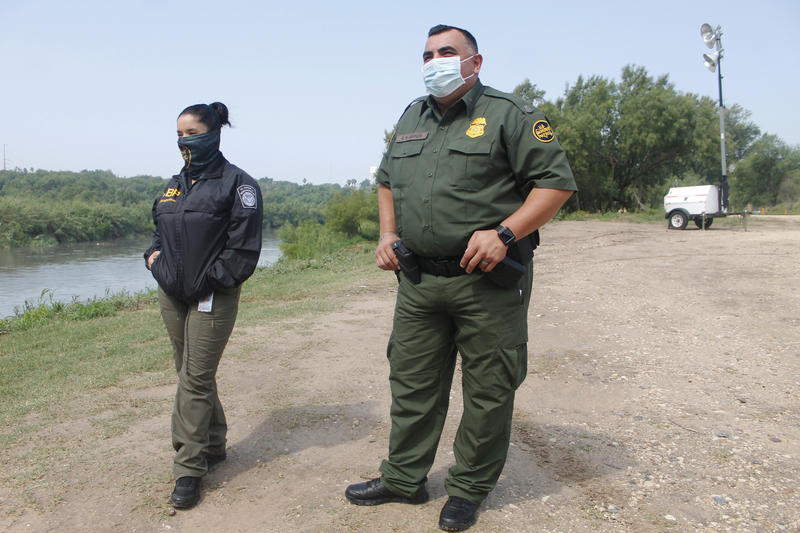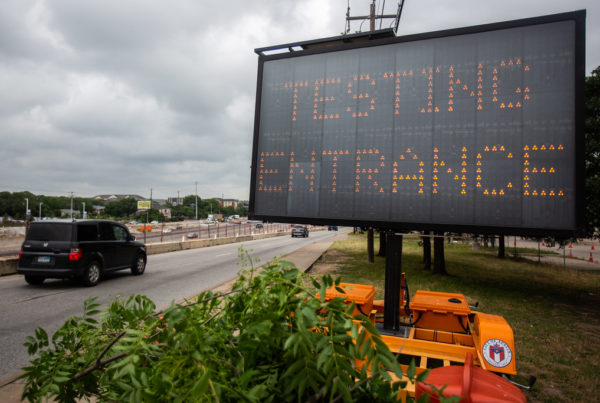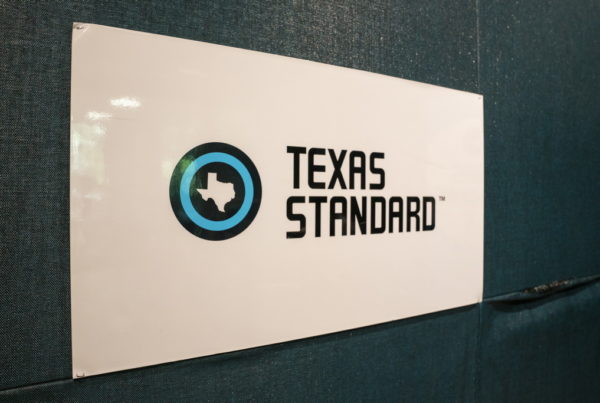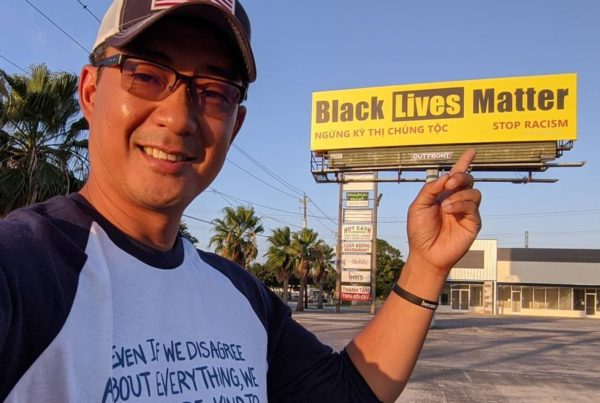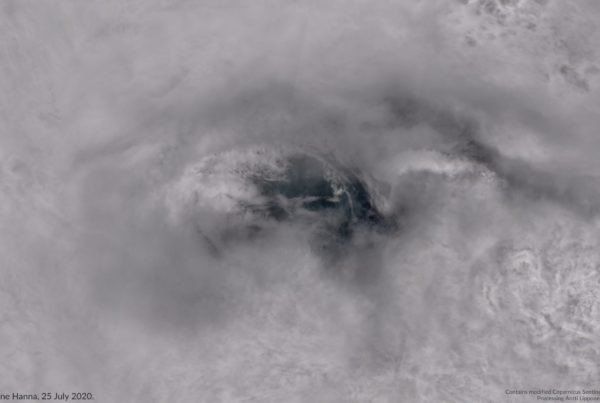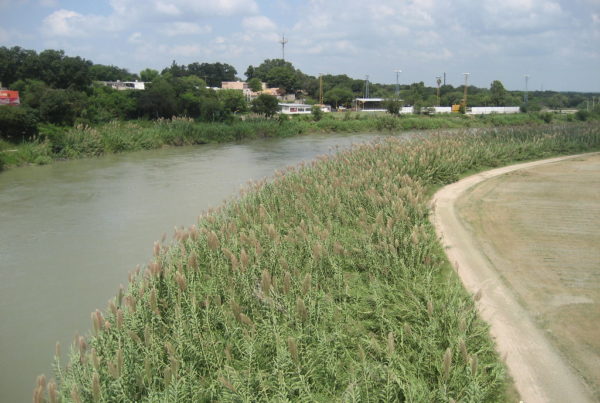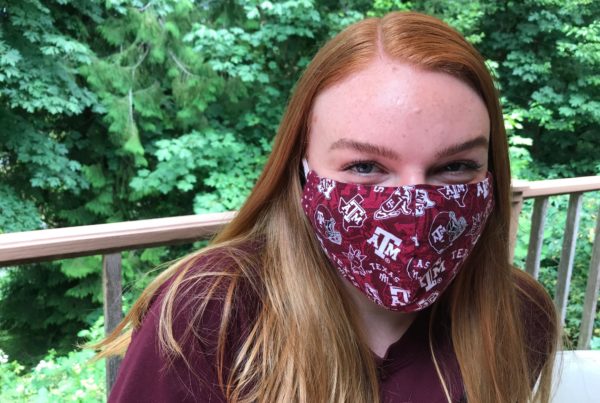From Texas Public Radio:
The COVID-19 pandemic hasn’t stopped some people, including those seeking asylum, from crossing into the U.S. at its southern border.
However, according to Rafael Garza, a special operations supervisor with the Border Patrol Sector in Laredo, the virus has changed how Border Patrol agents do their jobs.
“Obviously the use of Personal Protective Equipment, social distancing, the implementation of Title 42 has helped out to mitigate the spread of the Coronavirus into the United States because all these people that are coming across that we do apprehend we don’t know their past travel history, where they’re coming from, what they’re bringing, if they’re symptomatic or asymptomatic,” said Garza.
Title 42, which Garza mentioned, is part of the U.S. Code that deals with public health. The Trump administration cites Title 42 in the CDC’s order from March, and said that’s what allows officials to quickly return migrants who cross the border — even asylum seekers and children who are supposed to go through a formal legal process.
“We apprehend them, we give them a face mask and I ask them if they’re feeling any symptoms, ‘No I’m fine, this and that,’ and then we process them remotely without taking them to the station we’ll process them in a combined area, we process them in the field,” Garza said. “They enroll them into the system and if they do not have any pending warrants, or any type of detrimental immigration history we will expel them as quickly as possible.”
The CDC order said people will either be quickly returned to the country which they entered the U.S. through, be sent back to their country of origin or be sent to another location as practicable.
In early April, ProPublic obtained a leaked Border Patrol Memo showing guidance that informed agents how to enforce the new CDC order.
“What’s happening now is that with the CDC order under COVID, they are saying that public health law is basically superseding immigration law,” said Theresa Cardinal Brown, the Director of immigration and cross border policy at the Bipartisan Policy Center.
She and other experts have said the Trump Administration’s use of Title 42 is unprecedented.
Title 42’s been around in some form since the 1890s and was originally enacted to stop boats from entering U.S. ports if they came from areas dealing with spikes in infectious diseases, like smallpox or cholera.
“In general, it’s been used in the past, or can be used, to prevent entry, or to quarantine people after they arrive, but as far as I know, this is the first time it’s been used very broadly to apply strictly to people entering between the Ports of Entry in the U.S.-Mexico land border,” said Cardinal Brown.
A U.S. Customs and Border Protection spokesperson said in a statement, “by quickly expelling individuals who cross illegally, we protect them, our agents, and the American public from potential exposure to COVID-19.”
But migrant advocates and some policy experts disagree.
Cardinal Brown said this is just the latest way the Trump administration is deterring and/or preventing people from having full access to the asylum process in the U.S.
“Over the last year and a half the Trump administration has expanded a series of policies under immigration law to address people arriving and claiming asylum at the border,” she said. “Some of those policies include something called the Migrant Protection Protocols, or also known as Remain in Mexico… another provision of immigration law that they have used is the asylum agreements with Guatemala, Honduras and El Salvador.”
“They’re not even bothering with any of the immigration law requirements and they are simply sending people back to where they came from,” said Cardinal Brown referring to the Title 42 expulsions.
The ACLU and others said what’s happening is illegal and filed a lawsuit against this latest border restriction which largely bars migrants from entering the country.
The medical community has pushed back, too.
Dr. Katherine Peeler with Physicians for Human Rights said their organization asked six experts in infectious disease epidemiology to review and analyze the CDC order.
“There was really no public health sense behind it, so it really categorically targets one particular group who is not anymore at likelihood to essentially spread COVID-19 than other groups that we are continually allowing into the United States,” said Peeler.
In May, Physicians for Human Rights told the CDC that asylum seekers are no more likely to spread COVID-19 than students, temporary workers and truck drivers who cross the border and are currently exempt from these types of restrictions.
“This rule violates U.S. and international legal obligations toward asylum seekers looking for safe haven in the United States,” said Michel Heisler, the medical director of PHR, in a press release. “The administration is brazenly using COVID-19 to enact its immigration agenda, effectively dismantling decades of U.S. asylum policy under the guise of public health.”
Back in Laredo, Border Patrol Agent Garza responded to the findings from Physicians for Human Rights.
“I think that question is more political. It’s a matter of personal opinion, whether it’s six experts or six Border Patrol agents. I mean who are you going to trust?” asked Garza. “Just because they have an expert title in front of their thing? Right now, if you see, it is working. It is a good tool that the United States government is using to mitigate the spread.”
CBP data shows that since the CDC order went into effect in late March there have been almost 70,000 Title 42 expulsions at the southern border.
Most individuals or families returned to Mexico aren’t from there and have no idea what to do next. Some end up homeless or targets for organized crime, which are just a few reasons groups like PHR and Amnesty International have said that these expulsions violate U.S refugee laws and treaty obligations.
These groups and others have said the federal government can both protect public health in the U.S. and migrants seeking protection.
Sara Melendez is a Public Affairs Officer with U.S. Customs and Border Protection. She responded to the claims by PHR, Amnesty International and others.
“Any of those questions dealing with human rights, or ACLU, or anything, you can put those in email writing and we’ll have our headquarters office give you a response to that,” said Melendez. “Go ahead and submit it in writing and we’ll get you a response back because we have to look into it and we have to see what they’re talking about and we got to do more research.”
TPR reached out to CBP and by email a spokesperson didn’t directly answer the question either and reiterated that Title 42 has helped mitigate the spread of COVID-19.
“These measures will remain in place until the CDC Director determines that the danger of the further introduction of COVID-19 into the United States has ceased to be a serious danger to the public health,” said the statement.


